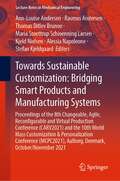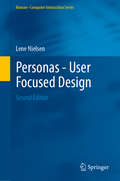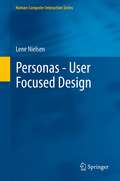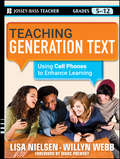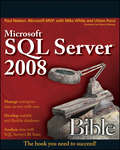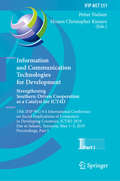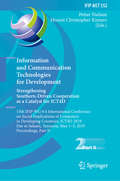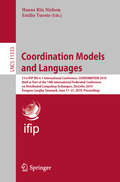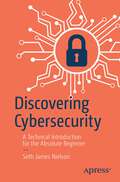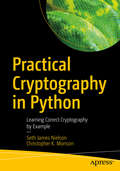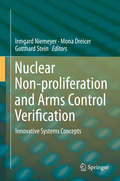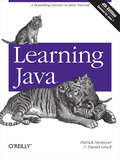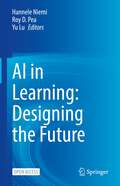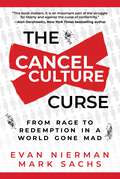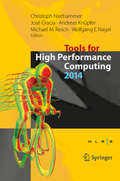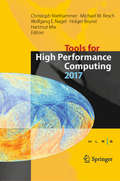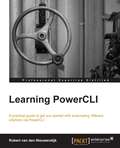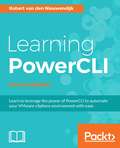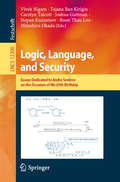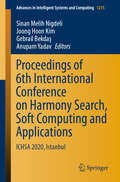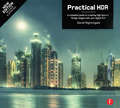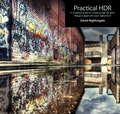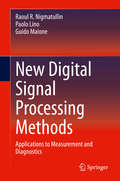- Table View
- List View
Business Information Management I (Microsoft® Office #2016)
by Joyce J. Nielsen Janice A. Snyder Suzanne WeixelNIMAC-sourced textbook
Towards Sustainable Customization: Proceedings of the 8th Changeable, Agile, Reconfigurable and Virtual Production Conference (CARV2021) and the 10th World Mass Customization & Personalization Conference (MCPC2021), Aalborg, Denmark, October/November 2021 (Lecture Notes in Mechanical Engineering)
by Kjeld Nielsen Ann-Louise Andersen Rasmus Andersen Thomas Ditlev Brunoe Maria Stoettrup Schioenning Larsen Alessia Napoleone Stefan KjeldgaardThis book features state-of-the-art contributions from two well-established conferences: Changeable, Agile, Reconfigurable and Virtual Production Conference (CARV2020) and Mass Customization and Personalization Conference (MCPC2020). Together, they focus on the joint design, development, and management of products, production systems, and business for sustainable customization and personalization. The book covers a large range of topics within this domain, ranging from industrial success factors to original contributions within the field.
Personas - User Focused Design: User Focused Design (Human–Computer Interaction Series #15)
by Lene NielsenPeople relate to other people, not to simplified types or segments. This is the concept that underpins this book. Personas, a user centered design methodology, covers topics from interaction design within IT, through to issues surrounding product design, communication, and marketing. Project developers need to understand how users approach their products from the product’s infancy, and regardless of what the product might be. Developers should be able to describe the user of the product via vivid depictions, as if they – with their different attitudes, desires and habits – were already using the product. In doing so they can more clearly formulate how to turn the product's potential into reality. Based on 20 years’ experience in solving problems for businesses and 15 years of research, currently at the IT University of Copenhagen, Lene Nielsen is Denmark’s leading expert in the persona method. She has a PhD in personas and scenarios, and through her research and practical experiences has developed her own approach to the method – 10 Steps to Personas. This second edition of Personas – User Focused Design presents a step-by-step methodology of personas which will be of interest to developers of IT, communications solutions and innovative products. This book also includes three new chapters and considerable expansion on the material in the first edition.
Personas - User Focused Design
by Lene NielsenPeople relate to other people, not to simplified types or segments. This is the concept that underpins this book. Personas, a user centered design methodology covers topics from interaction design within IT, through to issues surrounding product design, communication, and marketing. Project developers need to understand how users approach their products from the product's infancy, and regardless of what the product might be. Developers should be able to describe the user of the product via vivid depictions, as if they - with their different attitudes, desires and habits - were already using the product. In doing so they can more clearly formulate how to turn the product's potential into reality. With contributions from professionals from Australia, Brazil, Finland, Japan, Russia, and the UK presenting real-world examples of persona method, this book will provide readers with valuable insights into this exciting research area. The inspiration to create user descriptions includes character-driven narratives, and the film Thelma & Louise is analyzed in order to understand how the development process can also be an engaging story in various professional contexts. With a solid foundation in her own research at the IT University of Copenhagen and more than five years of experience in solving problems for businesses, Lene Nielsen is Denmark's leading expert in the persona method. She has a PhD in personas and scenarios, and through her research and practical experiences she has developed her own approach to the method - 10 Steps to Personas. Personas - User Focused Design presents a step-by-step methodology of personas which will be of interest to developers of IT, communications solutions and innovative products.
Teaching Generation Text
by Lisa Nielsen Willyn WebbMobilizing the power of cell phones to maximize students' learning power Teaching Generation Text shows how teachers can turn cell phones into an educational opportunity instead of an annoying distraction. With a host of innovative ideas, activities, lessons, and strategies, Nielsen and Webb offer a unique way to use students' preferred method of communication in the classroom. Cell phones can remind students to study, serve as a way to take notes, provide instant, on-demand answers and research, be a great vehicle for home-school connection, and record and capture oral reports or responses to polls and quizzes, all of which can be used to enhance lesson plans and increase motivation. Offers tactics for teachers to help their students integrate digital technology with their studies Filled with research-based ideas and strategies for using a cell phone to enhance learning Provides methods for incorporating cell phones into instruction with a unit planning guide and lesson plan ideas This innovative new book is filled with new ideas for engaging learners in fun, free, and easy ways using nothing more than a basic, text-enabled cell phone.
Quantum Computation and Quantum Information
by Michael A. Nielsen Isaac L. ChuangIn this first comprehensive introduction to the main ideas and techniques of quantum computation and information, Michael Nielsen and Isaac Chuang ask the question: What are the ultimate physical limits to computation and communication? They detail such remarkable effects as fast quantum algorithms, quantum teleportation, quantum cryptography and quantum error correction. A wealth of accompanying figures and exercises illustrate and develop the material in more depth. They describe what a quantum computer is, how it can be used to solve problems faster than familiar "classical" computers, and the real-world implementation of quantum computers. Their book concludes with an explanation of how quantum states can be used to perform remarkable feats of communication, and of how it is possible to protect quantum states against the effects of noise.
Microsoft SQL Server 2008 Bible
by Paul Nielsen Mike White Uttam ParuiHarness the power of SQL Server, Microsoft's high-performance database and data analysis software package, by accesing everything you need to know in Microsoft SQL Server 2008 Bible. Learn the best practices, tips, and tricks from this comprehensive tutorial and reference, which includes specific examples and sample code, with nearly every task demonstrated in both a graphical and SQL code method. Understand how to develop SQL Server databases and data connections, how to administer the SQL Server and keep databases performing optimally, and how to navigate all the new features of the 2008 release.
Information and Communication Technologies for Development. Strengthening Southern-Driven Cooperation as a Catalyst for ICT4D: 15th IFIP WG 9.4 International Conference on Social Implications of Computers in Developing Countries, ICT4D 2019, Dar es Salaam, Tanzania, May 1–3, 2019, Proceedings, Part I (IFIP Advances in Information and Communication Technology #551)
by Petter Nielsen Honest Christopher KimaroThe two volumes IFIP AICT 551 and 552 constitute the refereed proceedings of the 15th IFIP WG 9.4 International Conference on Social Implications of Computers in Developing Countries, ICT4D 2019, held in Dar es Salaam, Tanzania, in May 2019.The 97 revised full papers and 2 short papers presented were carefully reviewed and selected from 185 submissions. The papers present a wide range of perspectives and disciplines including (but not limited to) public administration, entrepreneurship, business administration, information technology for development, information management systems, organization studies, philosophy, and management. They are organized in the following topical sections: communities, ICT-enabled networks, and development; digital platforms for development; ICT for displaced population and refugees. How it helps? How it hurts?; ICT4D for the indigenous, by the indigenous and of the indigenous; local technical papers; pushing the boundaries - new research methods, theory and philosophy in ICT4D; southern-driven human-computer interaction; sustainable ICT, informatics, education and learning in a turbulent world - "doing the safari way”.
Information and Communication Technologies for Development. Strengthening Southern-Driven Cooperation as a Catalyst for ICT4D: 15th IFIP WG 9.4 International Conference on Social Implications of Computers in Developing Countries, ICT4D 2019, Dar es Salaam, Tanzania, May 1–3, 2019, Proceedings, Part II (IFIP Advances in Information and Communication Technology #552)
by Petter Nielsen Honest Christopher KimaroThe two volumes IFIP AICT 551 and 552 constitute the refereed proceedings of the 15th IFIP WG 9.4 International Conference on Social Implications of Computers in Developing Countries, ICT4D 2019, held in Dar es Salaam, Tanzania, in May 2019.The 97 revised full papers and 2 short papers presented were carefully reviewed and selected from 185 submissions. The papers present a wide range of perspectives and disciplines including (but not limited to) public administration, entrepreneurship, business administration, information technology for development, information management systems, organization studies, philosophy, and management. They are organized in the following topical sections: communities, ICT-enabled networks, and development; digital platforms for development; ICT for displaced population and refugees. How it helps? How it hurts?; ICT4D for the indigenous, by the indigenous and of the indigenous; local technical papers; pushing the boundaries - new research methods, theory and philosophy in ICT4D; southern-driven human-computer interaction; sustainable ICT, informatics, education and learning in a turbulent world - "doing the safari way”.
Coordination Models and Languages: 21st IFIP WG 6.1 International Conference, COORDINATION 2019, Held as Part of the 14th International Federated Conference on Distributed Computing Techniques, DisCoTec 2019, Kongens Lyngby, Denmark, June 17–21, 2019, Proceedings (Lecture Notes in Computer Science #11533)
by Hanne Riis Nielson Emilio TuostoThis book constitutes the proceedings of the 21th International Conference on Coordination Models and Languages, COORDINATION 2019, held in Kongens Lyngby, Denmark, in June 2019, as part of the 14th International Federated Conference on Distributed Computing Techniques, DisCoTec 2019. The 15 full papers included in this volume were carefully reviewed and selected from 25 submissions. The papers are organized in topical sections named: computational models; tools; exploring new frontiers; and coordination patterns.
Discovering Cybersecurity: A Technical Introduction for the Absolute Beginner
by Seth James NielsonThe contemporary IT landscape is littered with various technologies that vendors claim will “solve” an organization’s cybersecurity challenges. These technologies are powerful and, in the right context, can be very effective. But misunderstood and misused, they either do not provide effective protection or do not protect the right things. This results in unnecessary expenditures, false beliefs of security, and interference with an organization’s mission.This book introduces major technologies that are employed in today’s cybersecurity landscape and the fundamental principles and philosophies behind them. By grasping these core concepts, professionals in every organization are better equipped to know what kind of technology they need, ask the right questions of vendors, and better interface with their CISO and security organization. The book is largely directed at beginners, including non-technical professionals such as policy makers, compliance teams, and business executives. What You Will Learn Authentication technologies, including secure password storage and how hackers “crack” password listsAccess control technology, such as BLP, BIBA, and more recent models such as RBAC and ABACCore cryptography technology, including AES encryption and public key signaturesClassical host security technologies that protect against malware (viruses, trojans, ransomware)Classical network security technologies, such as border security (gateways, firewalls, proxies), network IDS and IPS, and modern deception systemsWeb security technologies, including cookies, state, and session defenses, and threats that try to subvert themEmail and social media security threats such as spam, phishing, social media, and other email threats Who This Book Is ForProfessionals with no technical training in engineering, computers, or other technology; those who want to know things at a technical level but have no previous background; professionals with a background in policy, compliance, and management; technical professionals without a background in computer security who seek an introduction to security topics; those with a security background who are not familiar with this breadth of technology.
Practical Cryptography in Python: Learning Correct Cryptography by Example
by Seth James Nielson Christopher K. MonsonDevelop a greater intuition for the proper use of cryptography. This book teaches the basics of writing cryptographic algorithms in Python, demystifies cryptographic internals, and demonstrates common ways cryptography is used incorrectly. Cryptography is the lifeblood of the digital world’s security infrastructure. From governments around the world to the average consumer, most communications are protected in some form or another by cryptography. These days, even Google searches are encrypted. Despite its ubiquity, cryptography is easy to misconfigure, misuse, and misunderstand.Developers building cryptographic operations into their applications are not typically experts in the subject, and may not fully grasp the implication of different algorithms, modes, and other parameters. The concepts in this book are largely taught by example, including incorrect uses of cryptography and how "bad" cryptography can be broken. By digging into the guts of cryptography, you can experience what works, what doesn't, and why. What You’ll LearnUnderstand where cryptography is used, why, and how it gets misusedKnow what secure hashing is used for and its basic propertiesGet up to speed on algorithms and modes for block ciphers such as AES, and see how bad configurations breakUse message integrity and/or digital signatures to protect messagesUtilize modern symmetric ciphers such as AES-GCM and CHACHAPractice the basics of public key cryptography, including ECDSA signaturesDiscover how RSA encryption can be broken if insecure padding is usedEmploy TLS connections for secure communicationsFind out how certificates work and modern improvements such as certificate pinning and certificate transparency (CT) logs Who This Book Is For IT administrators and software developers familiar with Python. Although readers may have some knowledge of cryptography, the book assumes that the reader is starting from scratch.
Nuclear Non-proliferation and Arms Control Verification: Innovative Systems Concepts
by Irmgard Niemeyer Mona Dreicer Gotthard SteinThis book strives to take stock of current achievements and existing challenges in nuclear verification, identify the available information and gaps that can act as drivers for exploring new approaches to verification strategies and technologies. With the practical application of the systems concept to nuclear disarmament scenarios and other, non-nuclear verification fields, it investigates, where greater transparency and confidence could be achieved in pursuit of new national or international nonproliferation and arms reduction efforts. A final discussion looks at how, in the absence of formal government-to-government negotiations, experts can take practical steps to advance the technical development of these concepts.
Learning Java: A Bestselling Hands-On Java Tutorial (Java Ser.)
by Patrick Niemeyer Daniel LeuckJava is the preferred language for many of today's leading-edge technologies--everything from smartphones and game consoles to robots, massive enterprise systems, and supercomputers. If you're new to Java, the fourth edition of this bestselling guide provides an example-driven introduction to the latest language features and APIs in Java 6 and 7. Advanced Java developers will be able to take a deep dive into areas such as concurrency and JVM enhancements. You'll learn powerful new ways to manage resources and exceptions in your applications, and quickly get up to speed on Java's new concurrency utilities, and APIs for web services and XML. You'll also find an updated tutorial on how to get started with the Eclipse IDE, and a brand-new introduction to database access in Java.
AI in Learning: Designing the Future
by Hannele Niemi Roy D. Pea Yu LuAI (Artificial Intelligence) is predicted to radically change teaching and learning in both schools and industry causing radical disruption of work. AI can support well-being initiatives and lifelong learning but educational institutions and companies need to take the changing technology into account. Moving towards AI supported by digital tools requires a dramatic shift in the concept of learning, expertise and the businesses built off of it. Based on the latest research on AI and how it is changing learning and education, this book will focus on the enormous opportunities to expand educational settings with AI for learning in and beyond the traditional classroom. This open access book also introduces ethical challenges related to learning and education, while connecting human learning and machine learning. This book will be of use to a variety of readers, including researchers, AI users, companies and policy makers.
The Cancel Culture Curse: From Rage to Redemption in a World Gone Mad
by Evan Nierman Mark SachsIn a groundbreaking first, cancel culture and its core elements are clearly defined, and a convincing case is made against this fundamentally un-American practice. Cancel culture is an insidious force in society today. In the seconds it takes to make one regrettable social media post—or wind up on the wrong side of a false accusation or misunderstanding—reputations, relationships, and careers are destroyed. Have we entered an era when people cannot make mistakes; where no apology or change of heart can ever deliver forgiveness? Making a comeback used to be a celebrated American ideal. But have the roads to redemption been permanently blocked by internet mobs seeking vengeance? In The Cancel Culture Curse, global crisis manager Evan Nierman and his colleague Mark Sachs examine the impact of cancel culture in today&’s media-driven world. The authors also explore the history of cancel culture and the trends that have fostered it, defining the telltale elements that are hallmarks of such campaigns. Nierman and Sachs provide fascinating case studies and interviews with well-known victims of cancel culture, including philosopher Peter Boghossian, Mumford & Sons cofounder Winston Marshall, and &“San Francisco Karen,&” among others. Also featured, is a playbook for rebounding from public shame, helping readers avoid becoming the latest targets of &“cancel vultures&” who enjoy picking apart the remains of those left to die on the side of the Internet highway.
Tools for High Performance Computing 2014
by Christoph Niethammer José Gracia Andreas Knüpfer Michael M. Resch Wolfgang E. NagelNumerical simulation and modelling using High Performance Computing has evolved into an established technique in academic and industrial research. At the same time, the High Performance Computing infrastructure is becoming ever more complex. For instance, most of the current top systems around the world use thousands of nodes in which classical CPUs are combined with accelerator cards in order to enhance their compute power and energy efficiency. This complexity can only be mastered with adequate development and optimization tools. Key topics addressed by these tools include parallelization on heterogeneous systems, performance optimization for CPUs and accelerators, debugging of increasingly complex scientific applications and optimization of energy usage in the spirit of green IT. This book represents the proceedings of the 8th International Parallel Tools Workshop, held October 1-2, 2014 in Stuttgart, Germany - which is a forum to discuss the latest advancements in the parallel tools.
Tools for High Performance Computing 2017: Proceedings of the 11th International Workshop on Parallel Tools for High Performance Computing, September 2017, Dresden, Germany
by Christoph Niethammer Michael M. Resch Wolfgang E. Nagel Holger Brunst Hartmut MixThis book presents the proceedings of the 11th International Parallel Tools Workshop, a forum to discuss the latest advances in parallel tools, held September 11-12, 2017 in Dresden, Germany.High-performance computing plays an increasingly important role for numerical simulation and modeling in academic and industrial research. At the same time, using large-scale parallel systems efficiently is becoming more difficult. A number of tools addressing parallel program development and analysis has emerged from the high-performance computing community over the last decade, and what may have started as a collection of a small helper scripts has now matured into production-grade frameworks. Powerful user interfaces and an extensive body of documentation together create a user-friendly environment for parallel tools.
Learning PowerCLI
by Robert Van Nieuwendijk"Learning PowerCLI" is written in a friendly and practical style with a focus on getting you started and automating daily tasks quickly and efficiently. If you manage or administrate a vSphere environment, and want to make that easier and more efficient, then this book is for you! This book is ideal for you if you want to learn how to automate your VMware vSphere infrastructure, by getting the most out of PowerCLI. It's assumed that you have some experience in administrating a VMware vSphere environment. Knowledge of Microsoft's Windows PowerShell is not a prerequisite.
Learning PowerCLI - Second Edition
by Robert Van NieuwendijkLearn to leverage the power of PowerCLI to automate your VMware vSphere environment with ease About This Book • This is first book on the market that will enlighten you on the latest version of PowerCLI and how to implement it • Effectively manage virtual machines, networks, and reports with the latest features of PowerCLI • A comprehensive and practical book on automating VMware vSphere Who This Book Is For This book is ideal for you if you want to learn how to automate your VMware vSphere or vCloud infrastructure by getting the most out of PowerCLI. It's assumed that you have some experience in administrating a vSphere or vCloud environment. Knowledge of Microsoft's Windows PowerShell is not a prerequisite. What You Will Learn • Explore PowerShell and PowerCLI cmdlets and their output objects • See how to manage virtual machines and work with virtual networks • Manage vCloud Director from PowerCLI • Use Site Recovery Manager from PowerCLI to create a disaster recovery solution • Manage NSX and vRealize Automation using REST API with PowerCLI • Create and configure vSphere HA and DRS clusters • Use vSphere Update Manager with PowerCLI to create patch baselines and scan hosts • Explore reporting techniques to retrieve log files In Detail VMware vSphere PowerCLI, a free extension to Microsoft Windows PowerShell, enables you to automate the management of a VMware vSphere or vCloud environment. This book will show you how to automate your tasks and make your job easier. Starting with an introduction to the basics of PowerCLI, the book will teach you how to manage your vSphere and vCloud infrastructure from the command line. To help you manage a vSphere host overall, you will learn how to manage vSphere ESXi hosts, host profiles, host services, host firewall, and deploy and upgrade ESXi hosts using Image Builder and Auto Deploy. The next chapter will not only teach you how to create datastore and datastore clusters, but you'll also work with profile-driven and policy-based storage to manage your storage. To create a disaster recovery solution and retrieve information from vRealize Operations, you will learn how to use Site Recovery Manager and vRealize Operations respectively. Towards the end, you'll see how to use the REST APIs from PowerShell to manage NSX and vRealize Automation and create patch baselines, scan hosts against the baselines for missing patches, and re-mediate hosts. By the end of the book, you will be capable of using the best tool to automate the management and configuration of VMware vSphere. Style and approach This comprehensive book will teach system administrators everything about PowerCLI 6 and how to utilize it to automate VMware vSphere.
Logic, Language, and Security: Essays Dedicated to Andre Scedrov on the Occasion of His 65th Birthday (Lecture Notes in Computer Science #12300)
by Vivek Nigam Tajana Ban Kirigin Carolyn Talcott Joshua Guttman Stepan Kuznetsov Boon Thau Loo Mitsuhiro OkadaThis Festschrift was published in honor of Andre Scedrov on the occasion of his 65th birthday. The 11 technical papers and 3 short papers included in this volume show the many transformative discoveries made by Andre Scedrov in the areas of linear logic and structural proof theory; formal reasoning for networked systems; and foundations of information security emphasizing cryptographic protocols. These papers are authored by researchers around the world, including North America, Russia, Europe, and Japan, that have been directly or indirectly impacted by Andre Scedrov. The chapter “A Small Remark on Hilbert's Finitist View of Divisibility and Kanovich-Okada-Scedrov's Logical Analysis of Real-Time Systems” is available open access under a CC BY 4.0 license at link.springer.com.
Proceedings of 6th International Conference on Harmony Search, Soft Computing and Applications: ICHSA 2020, Istanbul (Advances in Intelligent Systems and Computing #1275)
by Sinan Melih Nigdeli Joong Hoon Kim Gebrail Bekdaş Anupam YadavThis book covers different aspects of real-world applications of optimization algorithms. It provides insights from the Sixth International Conference on Harmony Search, Soft Computing and Applications held at Istanbul University, Turkey, in July 2020. Harmony Search (HS) is one of the most popular metaheuristic algorithms, developed in 2001 by Prof. Joong Hoon Kim and Prof. Zong Woo Geem, that mimics the improvisation process of jazz musicians to seek the best harmony. The book consists of research articles on novel and newly proposed optimization algorithms; the theoretical study of nature-inspired optimization algorithms; numerically established results of nature-inspired optimization algorithms; and real-world applications of optimization algorithms and synthetic benchmarking of optimization algorithms.
Practical HDR: A complete guide to creating High Dynamic Range images with your Digital SLR
by David NightingaleHDR is both a technical solution to the limitations of digital camera sensors, and a creative tool that can give any image much more impact - but it is not without its pitfalls, and it's essential to understand these if you want to take full advantage of this innovative technique. The second edition of David Nightingale's successful Practical HDR is completely updated with the latest techniques and technologies in HDR. Practical HDR provides you with an abundance of step-by-step examples that will quickly make you an expert on the theory and practice of shooting and processing HDR images, allowing you to get the best possible results every time. As well as practical advice on shooting and processing, the book also contains a global showcase of inspirational HDR images - you will quickly find that HDR offers unparralleled opportunities for indulging your creative instincts, from photo-realistic to hyper-realism.
Practical HDR (2nd Edition): The Complete Guide To Creating High Dynamic Range Images With Your Digital Slr
by David NightingaleThe first edition of David Nightingale's Practical HDR swiftly established itself as the standard work on this cutting-edge processing technique, garnering rave reviews and reprinting several times. Now, technical advances in the field have expanded HDR's possibilities still further, and this second, expanded edition, revised throughout, will cement David's reputation as the most respected writer in the field.Covering new programs, in particular Adobe CS5's HDR capabilities, and with more killer photos from the world's leading lights in HDR processing, Practical HDR will let the reader create jaw-dropping images that demand a second look.
New Digital Signal Processing Methods: Applications to Measurement and Diagnostics
by Raoul R. Nigmatullin Paolo Lino Guido MaioneThis book is intended as a manual on modern advanced statistical methods for signal processing. The objectives of signal processing are the analysis, synthesis, and modification of signals measured from different natural phenomena, including engineering applications as well. Often the measured signals are affected by noise, distortion and incompleteness, and this makes it difficult to extract significant signal information. The main topic of the book is the extraction of significant information from measured data, with the aim of reducing the data size while keeping the basic information/knowledge about the peculiarities and properties of the analyzed system; to this aim, advanced and recently developed methods in signal analysis and treatment are introduced and described in depth. More in details, the book covers the following new advanced topics (and the corresponding algorithms), including detailed descriptions and discussions: the Eigen-Coordinates (ECs) method, The statistics of the fractional moments, The quantitative "universal" label (QUL) and the universal distribution function for the relative fluctuations (UDFRF), the generalized Prony spectrum, the Non-orthogonal Amplitude Frequency Analysis of the Smoothed Signals (NAFASS), the discrete geometrical invariants (DGI) serving as the common platform for quantitative comparison of different random functions. Although advanced topics are discussed in signal analysis, each subject is introduced gradually, with the use of only the necessary mathematics, and avoiding unnecessary abstractions. Each chapter presents testing and verification examples on real data for each proposed method. In comparison with other books, here it is adopted a more practical approach with numerous real case studies.

